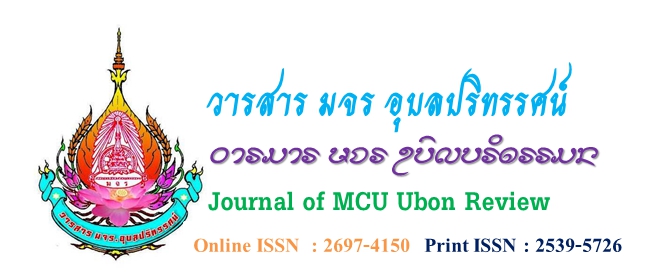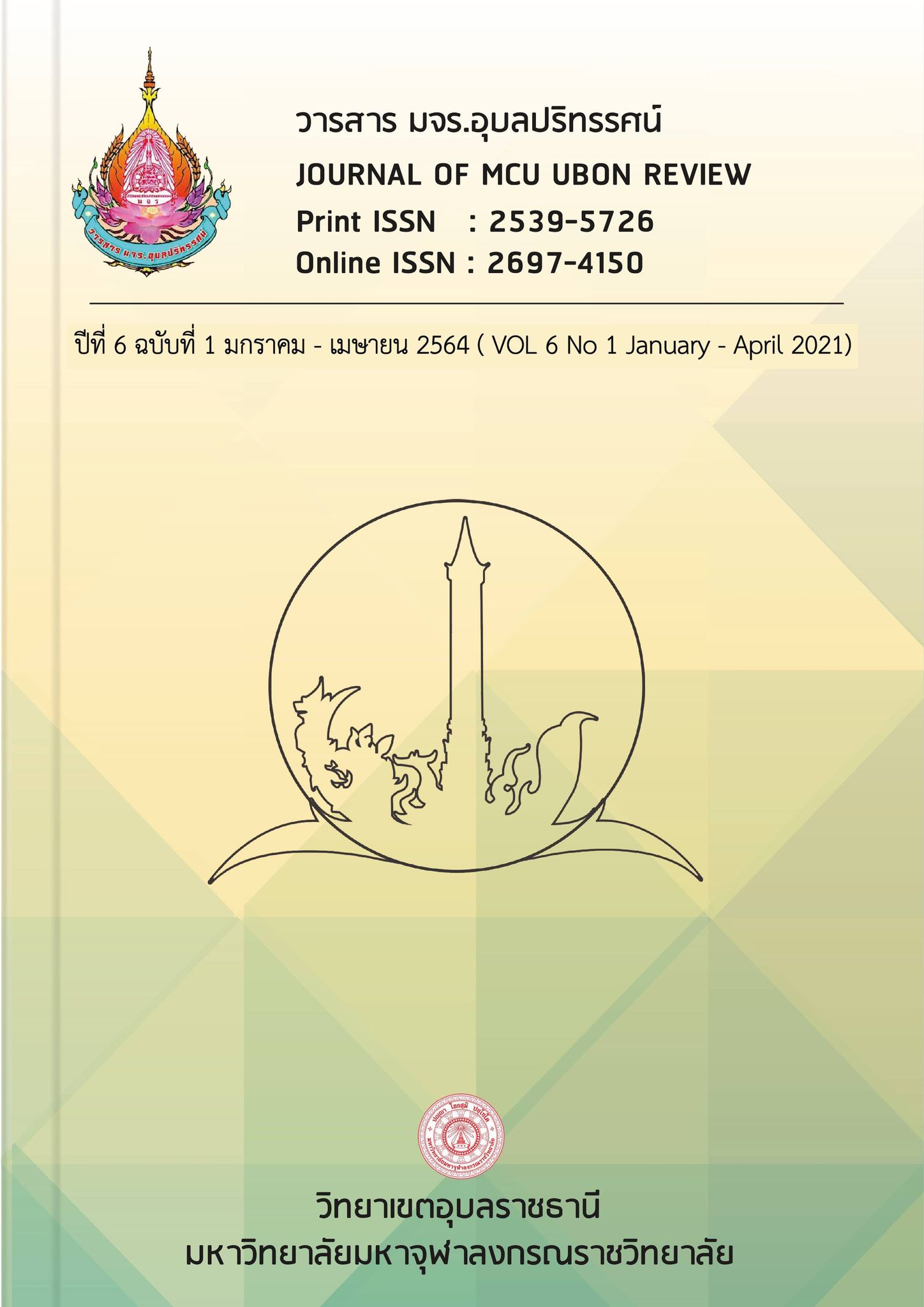การพัฒนาตัวบ่งชี้สมรรถนะทางวิชาการของบุคลากร มหาวิทยาลัยมหาจุฬาลงกรณราชวิทยาลัย
Main Article Content
บทคัดย่อ
การพัฒนาตัวบ่งชี้สมรรถนะทางวิชาการของบุคลากร มหาวิทยาลัยมหาจุฬาลงกรณราชวิทยาลัย มีวัตถุประสงค์เพื่อพัฒนาตัวบ่งชี้สมรรถนะ เพื่อตรวจสอบโมเดลการวัดตัวบ่งชี้สมรรถนะและเพื่อสร้างและยืนยันรูปแบบสมรรถนะทางวิชาการเพื่อความสำเร็จของคณาจารย์มหาวิทยาลัยมหาจุฬาลงกรณราชวิทยาลัย ใช้ระเบียบวิธีวิจัยเชิงปริมาณและคุณภาพ ประชากร ได้แก่ คณาจารย์ที่สังกัดในหน่วยงานของมหาวิทยาลัยมหาจุฬาลงกรณราชวิทยาลัย งานวิจัยเชิงคุณภาพ ศึกษาจากเอกสาร ตำราที่เกี่ยวข้อง กลุ่มตัวอย่างในการวิจัยเชิงปริมาณ ได้แก่ คณาจารย์มหาวิทยาลัยมหาจุฬาลงกรณราชวิทยาลัย ส่วนกลาง วิทยาเขต และวิทยาลัยสงฆ์ จำนวน 400 คน ผลการวิจัย พบว่า ตัวบ่งชี้สมรรถนะทางวิชาการของคณาจารย์มหาวิทยาลัยมหาจุฬาลงกรณราชวิทยาลัย ประกอบด้วย ตัวบ่งชี้ จำนวน 75 ตัวบ่งชี้ และวิเคราะห์องค์ประกอบเชิงยืนยันอันดับที่สอง (Secondary Order) ได้ตัวบ่งชี้ จำนวน 52 ตัวบ่งชี้ จากองค์ประกอบ 5 องค์ประกอบ ผลการวิเคราะห์องค์ประกอบเชิงยืนยันอันดับที่สอง (Secondary Order) พบว่า ตัวบ่งชี้ที่คัดสรรแล้ว จำนวน 52 ตัวบ่งชี้ ตัวบ่งชี้แต่ละตัวมีค่าเป็นบวกและสามารถวัดองค์ประกอบสมรรถนะทางวิชาการของคณาจารย์มหาวิทยาลัยมหาจุฬาลงกรณราชวิทยาลัย มีนัยสำคัญทางสถิติที่ระดับ .01 ประกอบด้วย 5 องค์ประกอบ จัดเรียงลำดับตามน้ำหนักองค์ประกอบ (Factor Loading) จากมากไปน้อย ดังนี้ 1) สมรรถนะด้านการสอน 2) สมรรถนะด้านการวิจัย 3) สมรรถนะด้านการบริการวิชาการ 4) สมรรถนะด้านการส่งเสริมศิลปวัฒนธรรม และ 5) สมรรถนะด้านความเป็นผู้นำทางวิชาการ มีค่าน้ำหนักองค์ประกอบ (Factor Loading) เท่ากับ 0.766, 0.721, 0.642, 0.574 และ 0.548 ตามลำดับ มีดัชนีความสอดคล้องและเหมาะสมระหว่างโมเดลกับข้อมูลเชิงประจักษ์หรือมีความเที่ยงตรงเชิงโครงสร้าง (Construct Validity) โดยมีค่าไค-สแควร์ (χ2)=12.416, df=7, P-Value= 0.183 ซึ่งมากกว่า 0.05 (แสดงว่าค่า χ2 7.05) ค่าดัชนี CFI=0.988, ค่าดัชนี TLI=0.974, SRMR=0.004, RMSEA=0.003 และมีค่าความเชื่อมั่นเชิงโครงสร้าง (Construct Reliability) เท่ากับ 0.978 ซึ่งมีค่ามากกว่า 0.60 ทุกค่าเป็นไปตามเกณฑ์มาตรฐานของโมเดลการวัด (Measurement Model)
Article Details
เอกสารอ้างอิง
บุญชม ศรีสะอาด. (2535). การวิจัยเบื้องต้น. กรุงเทพฯ : สำนักพิมพ์ชมรมเด็ก.
ภัทรพล ทศมาศและคณะ. (2560). การเขียนบทความวิชาการทางรัฐประศาสนศาสตร์เพื่อ
การตีพิมพ์. วารสารสถาบันวิจัยและพัฒนา มหาวิทยาลัยราชภัฏมหาสารคาม ปีที่ 4
ฉบับที่ 1 มกราคม 2560-มิถุนายน 2560.
Kenaphoom, Sanya. (2014A). “Research Philosophy: Quantity Quality” Journal
of Political Science and Law, Rajabhat Kalasin University, 3 (2), 49-51.
Kenaphoom, Sanya. (2014B). “Establish the Research Conceptual Framework in Public Administration by the Rational Conceptual thinking”. PhetchabunRajabhat Journal, 16 (1) : January-June 2014 : 1-19.


